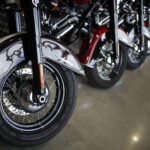A powerful hurricane would shut down Hawaiian Electric’s grid for 30 days. Streets as far inland as Beretania and the H-1 freeway would be flooded. Debris would block roads. And homes would be damaged across the island of Oahu, if a powerful hurricane struck Oahu, officials said.
Officials are imagining what would happen if a category 4 hurricane struck Oahu and testing how well they’d be able to respond.
“With winds at 150 (mph) gusting up to 200, we have a problem,” Ed Teixeira, vice director of state Civil Defense, said. But he said drills are helping officials get ready.
“We’ve gone this far with our planning process — it’s better than we’ve ever had,” he said.
The imagined scenario officials have been working with calls for a Category 4 hurricane — meaning a storm with sustained winds over 130 mph — to make landfall at Kapolei.
The exercise was at the point where 48 hours had passed after Hurricane Makani arrived. The scenario had 130 deaths, 2,000 injuries, and many more missing.
The drill was only simulated, which means no ambulances and fire engines were racing through the streets. Officials mainly worked the phones, coordinating how to cope with crises.
A hospital had to close, and officials had to figure out where the hospital was going to take its 500 patients. Another mock crisis involved a flooded shelter and the need to determine alternative shelter for those seeking help.
Teixeira said Hawaiian Electric’s grid would likely be down for 30 days, as powerful winds would take down significant infrastructure. But he said pockets of the island would have some power restored with the use of emergency generators.
Plans called for ships and planes ready to deliver generators as soon as possible to get power restored.
Running water — which the Board of Water Supply pumps using electricity — would also not be restored for awhile.
The state practiced for a Category 4 hurricane because that’s a plausible strength for the islands.
Teixeira noted Hurricane Iniki was a Category 4 before it hit Kauai in 1992.
Despite the government preparations, Teixeira said residents need to get ready on their own.
Hawaii residents should have seven days of food on hand, state Civil Defense officials say. Residents should also have two days of food that they’re able to take to a shelter because the facilities most likely won’t have food in stock.
People will need this food to sustain themselves until the state is able to start delivering supplies.
Though the drill involved Oahu, Teixeira said the same response plan could be applied to any island.
Oahu is perhaps the best place for state and federal officials to get ready for a Hawaii disaster because its large population — 900,000 — and extensive infrastructure present the greatest challenge.
The Federal Emergency Management Agency funded the exercise, and was on hand working side-by-side with Teixeira.
FEMA would send equipment, supplies, and response teams into areas in the paths of hurricanes before the storms are due to hit.
The president would also be ready to declare emergency disasters before hurricanes land, to allow FEMA and other federal agencies to respond quickly.
“It’s a much more robust organization than it was in the pre-Katrina days,” said Farley Howell, federal preparedness coordinator for the region including Hawaii.
Was this article valuable?
Here are more articles you may enjoy.

 Nearly 24 Firms Seek Deal With CFTC to Settle Enforcement Cases
Nearly 24 Firms Seek Deal With CFTC to Settle Enforcement Cases  LA Wildfires Had Little Impact on Reinsurer Risk Appetite During April Renewals
LA Wildfires Had Little Impact on Reinsurer Risk Appetite During April Renewals  EU Adopts Tariffs on $23B Billion of US Goods in Metals Fight
EU Adopts Tariffs on $23B Billion of US Goods in Metals Fight  UAW Joins Critics Slamming RFK Jr.’s Cuts to Worker Safety Unit
UAW Joins Critics Slamming RFK Jr.’s Cuts to Worker Safety Unit 